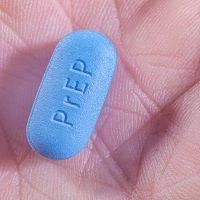HIV Prevention Guidelines Suggest Pre- and Post-Exposure Prophylaxis for High-Risk Canadians
These guidelines are safe and effective primary prevention tools to potentially reduce new HIV infections in Canada.

Strategies to prevent HIV in high-risk populations include both pre-exposure and post-exposure prophylaxis for non-infected individuals, new guidelines published in the Canadian Medical Association Journal recommend.
"Pre-exposure prophylaxis (PrEP) and non-occupational post-exposure prophylaxis (nPEP) are 2 important strategies for preventing HIV that should be considered standard of care and implemented as components of a comprehensive response to the epidemic,’’ wrote lead study author Darrell H.S. Tan, MD, FRCPC, PhD.
PrEP involves the use of antiretroviral medications by HIV-uninfected persons who are at high, ongoing risk of acquiring the virus. PrEP begins before and continues after potential HIV exposures.
Post-exposure prophylaxis (PEP) involves 28 days of antiretroviral medications immediately after a specific HIV exposure. Treatment is “non-occupational” (nPEP) when used after sexual and injection drug use exposures, rather than after accidental exposures in work settings, the authors said.
"The guidelines provide clear recommendations to front-line clinicians on who should be considered for HIV pre- and non-occupational post-exposure prophylaxis, as well as what specific drug regimens are most appropriate,’’ Tan, an infectious diseases physician and clinician-scientist at St. Michael's Hospital in Toronto, Ontario, told MD Magazine.
An estimated 2,000 to 3,000 new HIV infections occur in Canada each year, mostly in adults age 30 to 39. The number has remained relatively constant over the past few years despite advances in HIV prevention, treatment and care. That has worrisome consequences that the guidelines hope to address.
"The large financial cost of HIV infection and the young age of those newly diagnosed underscore the economic and social importance of preventing new infections," the authors said.
In the US, in comparison, annual HIV infections fell 18% between 2008 and 2014, from an estimated 45,700 to 37,600, the US Centers for Disease Control and Prevention (CDC) estimates.
Canada has lagged behind, particularly in scaling up the use of pre-exposure prophylaxis, Tan said.
Some 54.3% of new infections in Canada occur in gay, bisexual and other men who have sex with men (MSM). Their risk is estimated to be 131 times higher than for other men, the authors said.
HIV incidence among people who inject drugs (PWID) is estimated to be 59 times higher than for other Canadians.
Targeting PrEP to high-risk populations is cost-effective in terms of health care spending, the authors contend.
In August/September 2017, Canada introduced generic TDF/FTC (emtricitabine/tenofovir disoproxil fumarate/Truvada), the anti-HIV medication approved for use as PrEP and a major component of all nPEP regimens.
"The cost of PrEP medication has decreased dramatically,” Tan noted.
At the same time, public drug coverage for PrEP is increasing. Still, inadequate access to PrEP and nPEP persists, Tan said.
"Even in Quebec and Ontario, people may still need to pay a deductible to gain access to the public drug insurance plan, and even the modest cost of these deductibles may be out of reach for some of those at greatest risk,’’ he said.
In formulating its guidelines, Canada chose to be broadly consistent with the recommendations for PrEP and nPEP found in other industrialized world settings — with a few tweaks.
“We have tried to provide a bit more practical detail about common clinical scenarios that may come up when prescribing these medications,’’ Tan said. ''We intentionally discuss both PrEP and nPEP in the same document, because they are related, complementary strategies that are based on similar clinical principles.’’
Among Canada’s guidelines: PrEP is strongly recommended for MSM and transgender women who report condomless anal sex within the past 6 months and have a sexually transmitted disease, recurrent use of nPEP or an ongoing sexual relationship with HIV-positive partner with substantial risk of transmissible HIV.
PrEP is also recommended for the HIV-negative partner in heterosexual serodiscordant relationships reporting condomless vaginal or anal sex where the HIV-positive partner has a substantial risk of transmissible HIV.
PrEP also may be considered for PWID if they share injection paraphernalia with a person with a non-negligible risk of HIV infection.
“There is a considerably larger body of evidence upon which to base recommendations for PrEP and nPEP use in gay or bisexual MSM,’’ Tan said. "There is relatively less experience and information about how best to implement these strategies in other groups.’’
Less investigation has occurred in PWID, some indigenous communities, people from HIV-endemic countries and women in sexual relationships with people from these groups.
"We hope that future work will help to fill these evidence gaps,’’ Tan said.
As for the expected benefits from the new guidelines, Tan cited raising awareness about the relatively new strategies, standardizing practice and encouraging primary care providers to get involved in prescribing the medications.
"These are very safe and effective primary prevention tools that hold great promise in reducing the number of new HIV infections in Canada,’’ he said.
Related Coverage
Key Challenges Await an Aging HIV-infected Population